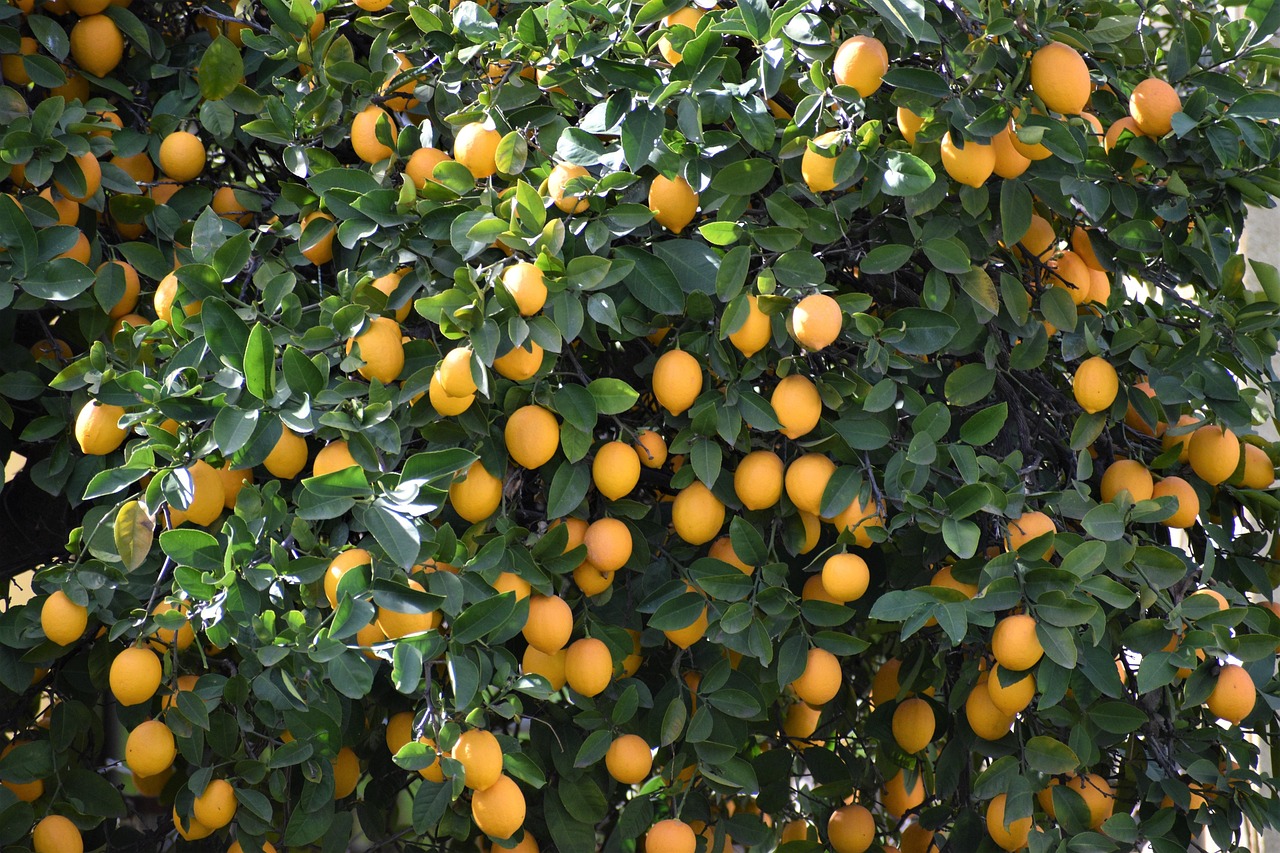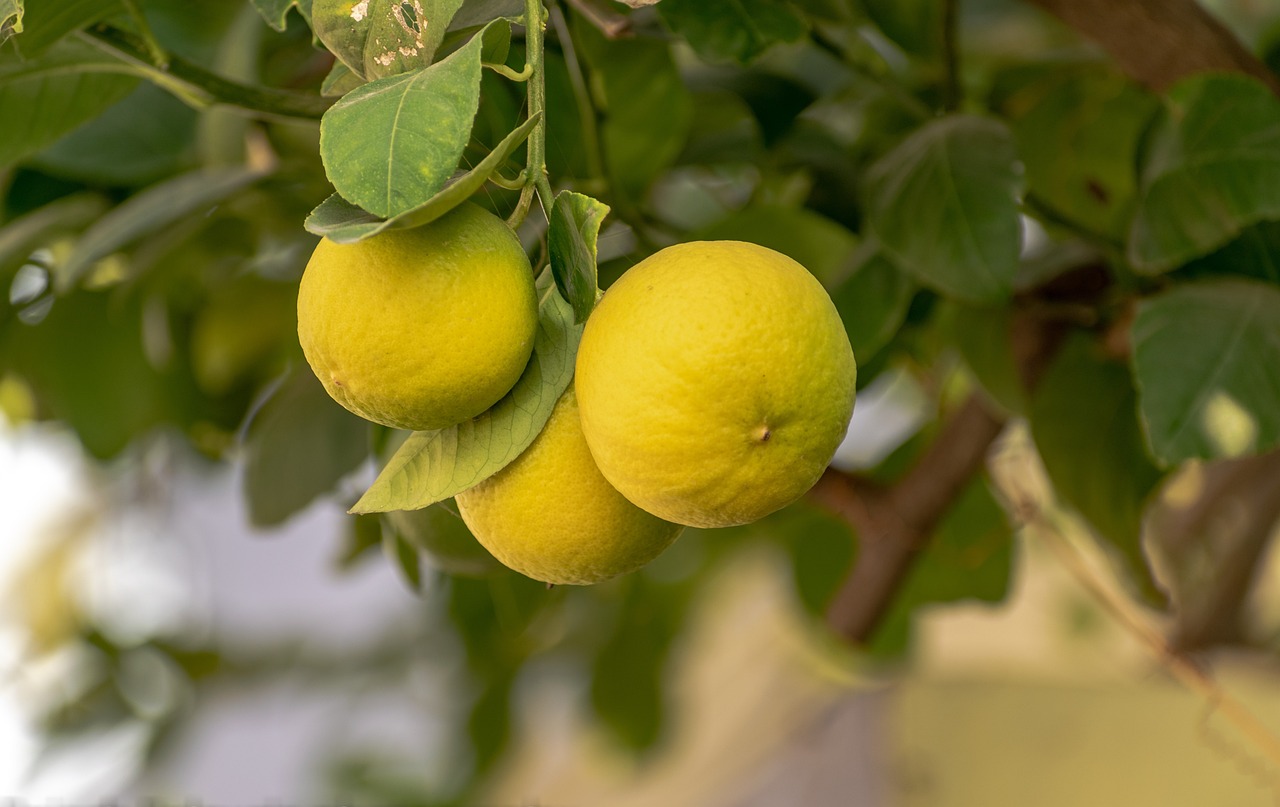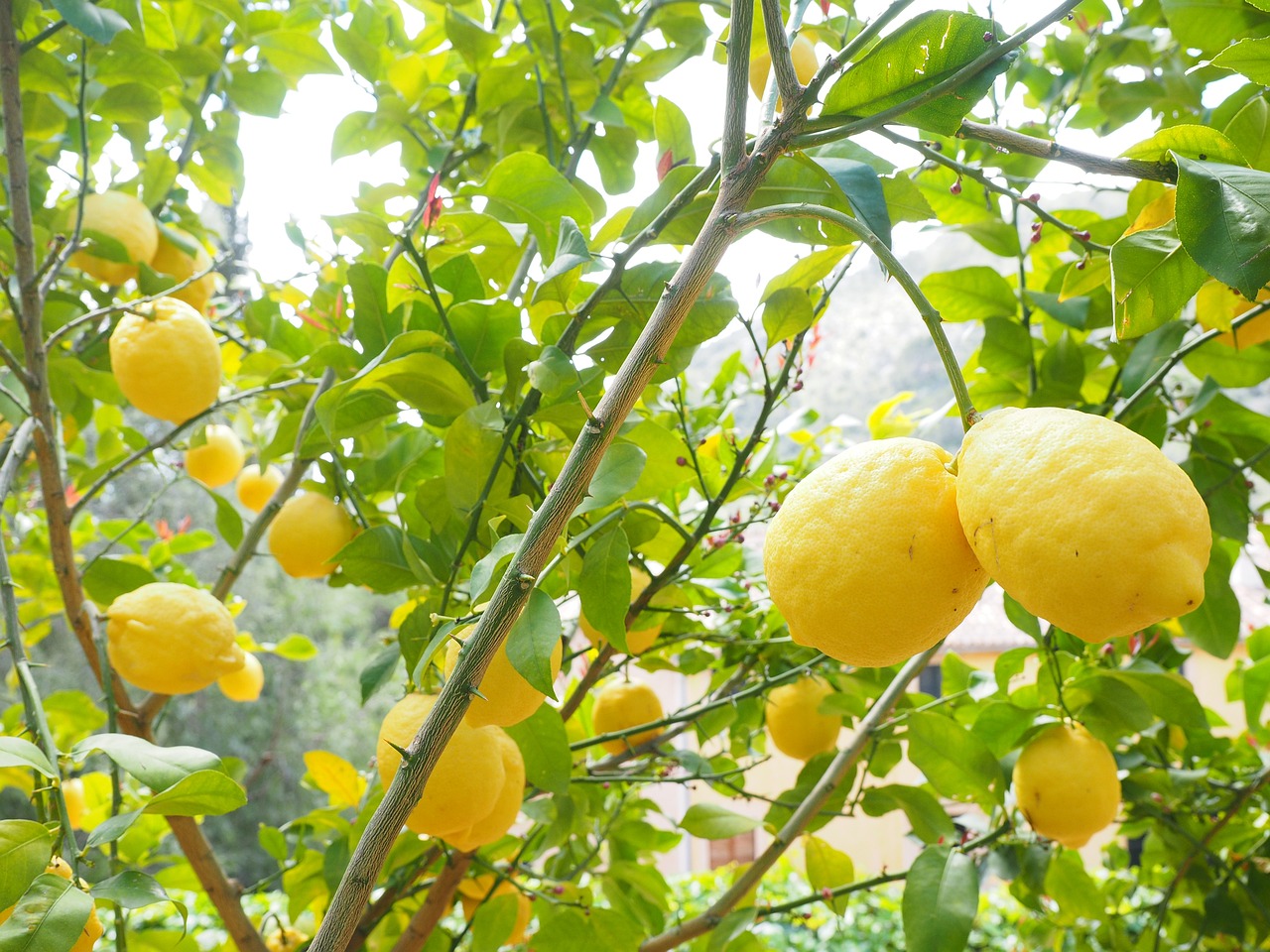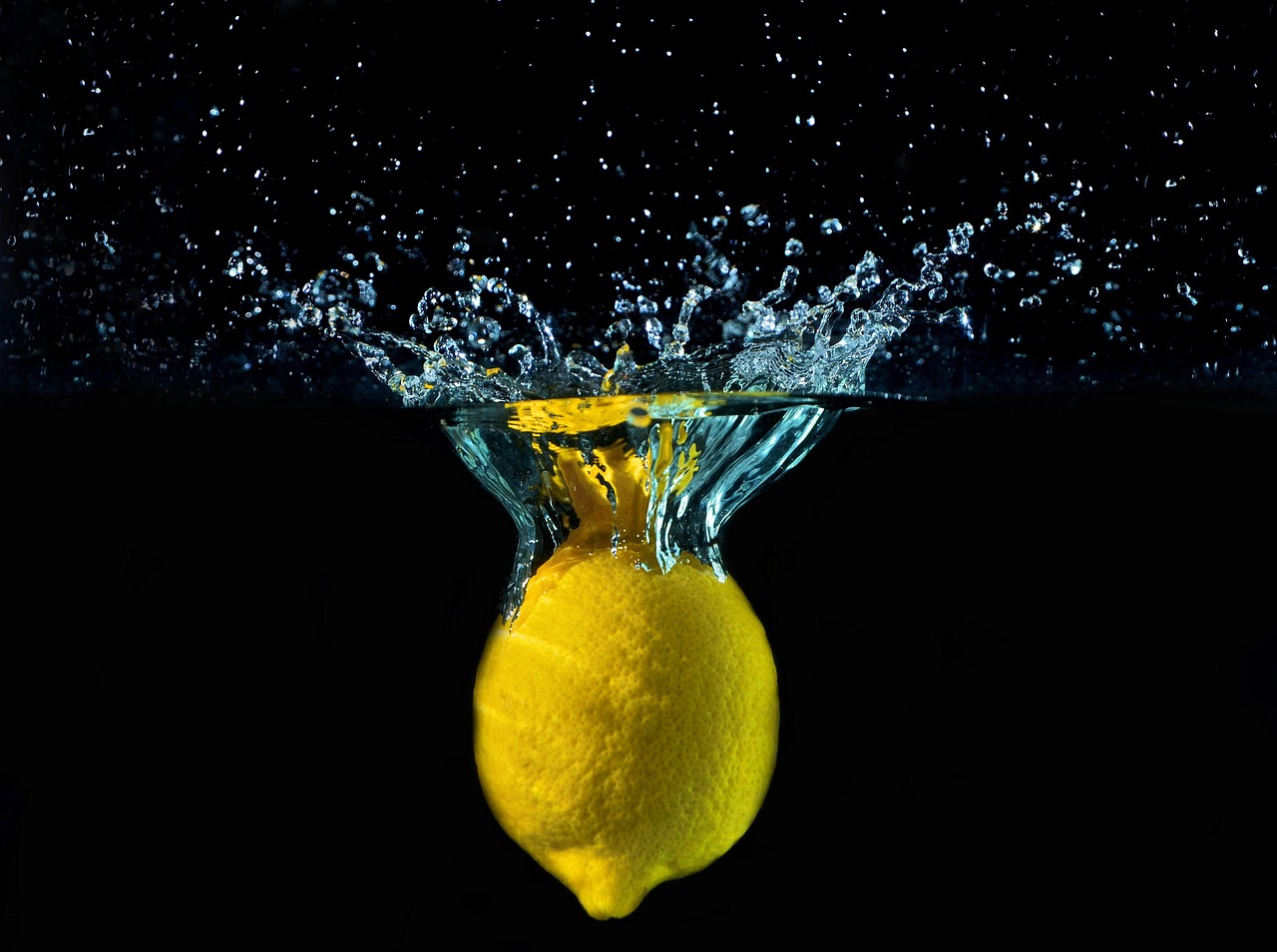Meyer lemon trees require careful pruning to thrive. Seasonal care involves removing dead or diseased branches, shaping the tree for better sunlight exposure, and encouraging new growth. Regular pruning promotes a healthy structure and enhances fruit production.
The Meyer lemon tree, a hybrid between a lemon and an orange, is cherished for its sweet, fragrant fruit and attractive foliage. This tree is smaller than standard lemon trees, making it ideal for home gardens and containers. Pruning is essential for maintaining the health and productivity of the tree. Understanding when and how to prune is crucial for optimal growth.

Pruning should be done at specific times throughout the year to ensure the tree remains healthy and produces a bountiful harvest. The best times for pruning are typically before the growing season in late winter or early spring. However, light pruning can also be done in summer after the fruiting period. Knowing the right techniques and tools is vital for effective pruning.
Understanding Meyer Lemon Tree Pruning
Pruning involves removing specific parts of a plant to encourage healthy growth. For Meyer lemon trees, this includes cutting back branches that are dead, damaged, or crossing over one another. Proper pruning helps the tree maintain a balanced shape and improves air circulation within the canopy. This is important as it reduces the risk of disease and pests.
Here are some key benefits of pruning Meyer lemon trees:

- Improved fruit quality and quantity.
- Enhanced air circulation and light penetration.
- Removal of diseased or damaged branches.
- Encouragement of new growth.
- Maintenance of an attractive shape.
To effectively prune your Meyer lemon tree, it is essential to use the right tools. Proper tools not only make the job easier but also help prevent damage to the tree. Here is a list of essential tools for pruning:
- Bypass pruners for small branches.
- Loppers for thicker branches.
- Saw for larger limbs.
- Gloves to protect your hands.
- Pruning shears for delicate cuts.
Before starting, assess the tree’s overall health and structure. Look for branches that are dead, discolored, or showing signs of disease. These should be removed first. Additionally, identify any crowded areas where branches may be crossing each other. These can create friction and hinder growth.
When to Prune Meyer Lemon Trees
The timing of your pruning efforts can significantly impact the health of your Meyer lemon tree. As mentioned earlier, late winter to early spring is considered the best time to perform major pruning tasks. This allows the tree to recover before the growing season begins. Here is a more detailed breakdown of seasonal pruning tasks:

| Season | Pruning Tasks |
|---|---|
| Late Winter/Early Spring | Major pruning to remove dead or damaged branches; shape the tree. |
| Summer | Light pruning after fruiting; remove any suckers or unwanted growth. |
| Fall | No major pruning; focus on maintaining overall health. |
Remember that during the growing season, it is important to avoid heavy pruning as it can stress the tree. Light maintenance, however, can be beneficial. Removing suckers or any branches that detract from the shape of the tree will keep it looking its best.
In addition to seasonal timing, consider the age of your Meyer lemon tree when planning your pruning schedule. Younger trees often require lighter pruning to encourage strong foundational growth. As trees mature, they can handle more substantial cuts that will enhance their shape and productivity.
Overall, understanding the seasonal care requirements of your Meyer lemon tree helps ensure its longevity and productivity. With proper timing and technique, you can enjoy bountiful harvests of delicious lemons while maintaining the tree’s health and beauty.

Techniques for Pruning Meyer Lemon Trees
Pruning techniques can greatly influence the health and productivity of your Meyer lemon tree. Understanding how to properly prune will ensure that you maximize fruit yield while maintaining the tree’s structure. Here are some effective techniques to consider:
Thinning Cuts
Thinning cuts involve removing entire branches or stems at their point of origin. This technique is used to improve air circulation and light penetration within the canopy. It helps reduce overcrowding and minimizes disease risk. To perform a thinning cut:
- Identify branches that are crossing or overcrowded.
- Follow the branch back to its point of origin.
- Make a clean cut just above the junction, avoiding damage to the remaining branches.
Heading Cuts
Heading cuts are made to shorten a branch and encourage bushier growth. This technique is beneficial for shaping the tree and promoting lateral growth. To make a heading cut:
- Select a branch you want to shorten.
- Cut just above a bud or leaf node.
- Aim to create a clean cut at a slight angle to promote healing.
Pinching
Pinching is a gentle technique that involves removing the tips of young shoots with your fingers. This encourages branching and denser foliage. Pinching is especially useful for young Meyer lemon trees that need to develop a strong structure.
- Identify new growth tips that are 4-6 inches long.
- Pinch off the tip between your thumb and forefinger, taking care not to damage the stem.
- Repeat as necessary to promote bushiness.
Common Mistakes to Avoid When Pruning
While pruning may seem straightforward, there are common mistakes that can negatively affect your Meyer lemon tree. Avoiding these pitfalls will help ensure successful pruning sessions:
- Over-pruning: Removing too much foliage can stress the tree. Aim to remove no more than 25% of the tree’s canopy in one session.
- Improper cuts: Making cuts too close or too far from nodes can harm the tree. Always cut above the node and at an angle.
- Neglecting tools: Using dull or dirty tools can introduce disease. Make sure all tools are sharp and sanitized before use.
- Pruning at the wrong time: Avoid heavy pruning during active growth. Stick to light maintenance during the growing season.
Post-Pruning Care
After pruning, providing proper care is essential for the recovery and growth of your Meyer lemon tree. Here are some steps to follow:
Watering
Immediately after pruning, ensure your tree receives adequate water. This helps reduce stress and promotes healing. Be careful not to overwater, as this can lead to root rot.
Nourishment
Applying a balanced fertilizer after pruning can support new growth. Look for fertilizers formulated for citrus trees, which contain the necessary nutrients for healthy fruit production.
Monitoring Health
Keep an eye on your Meyer lemon tree after pruning. Look for any signs of stress or disease, such as wilting leaves or discoloration. Early detection allows for prompt action if issues arise.
Seasonal Pruning Checklist
A seasonal checklist can help you stay organized and ensure you complete all necessary tasks throughout the year. Below is a simple checklist for maintaining your Meyer lemon tree:
| Season | Checklist Items |
|---|---|
| Late Winter/Early Spring |
|
| Summer |
|
| Fall | No major pruning; monitor tree health and prepare for winter. |
This checklist serves as a guide to ensure you are performing all necessary pruning tasks throughout the seasons. Consistent care will contribute significantly to the overall health of your Meyer lemon tree.
Your commitment to proper pruning techniques, timing, and post-care will yield fruitful rewards in your Meyer lemon harvests. By following these guidelines, you can cultivate a vibrant, productive tree that thrives year after year.
Identifying and Managing Common Pests and Diseases
To ensure your Meyer lemon tree remains healthy, it is vital to identify and manage common pests and diseases. These issues can hinder growth and reduce fruit production. Early detection and treatment are key to maintaining the vitality of your tree.
Common Pests
Meyer lemon trees can attract various pests. Understanding these pests can help you take effective measures against them. Here are some of the most common pests you may encounter:
- Aphids: Small, soft-bodied insects that suck sap from the leaves. They can cause curling and yellowing of leaves.
- Spider Mites: Tiny arachnids that create fine webs on the tree. Infestations can lead to leaf drop and reduced vigor.
- Scale Insects: These pests attach themselves to the stems and leaves, feeding on sap. They appear as small, raised bumps.
- Whiteflies: Small white insects that also suck sap. They can cause yellowing leaves and stunted growth.
Signs of Infestation
Detecting pests early is crucial for effective management. Watch for these signs of infestation:
- Yellowing or curling leaves.
- Sticky residue (honeydew) on leaves or surrounding surfaces.
- Visible insects on the foliage or branches.
- Webbing or small specks on leaves from spider mites.
Pest Management Strategies
There are several strategies for managing pests effectively:
- Regular Inspections: Check your tree frequently for any signs of pests or damage.
- Natural Predators: Encourage beneficial insects like ladybugs and lacewings that feed on aphids and other pests.
- Insecticidal Soap: Use this product to effectively eliminate soft-bodied insects without harming the tree.
- Neem Oil: This natural pesticide can deter many pests when applied as directed.
Diseases Affecting Meyer Lemon Trees
Meyer lemon trees are also susceptible to several diseases. Recognizing these diseases early can help you implement effective treatment plans.
Common Diseases
- Citrus Canker: Characterized by lesions on leaves, stems, and fruit. It can cause premature leaf drop.
- Root Rot: Often caused by overwatering, resulting in brown, mushy roots. Symptoms include wilting and yellowing leaves.
- Powdery Mildew: A fungal infection that appears as a white powdery substance on leaves, leading to stunted growth.
- Citrus Greening Disease: A serious disease transmitted by pests that causes yellowing of leaves and misshapen fruit.
Signs of Disease
Here are some common signs that may indicate disease in your Meyer lemon tree:
- Browning or yellowing leaves that may drop prematurely.
- Wilting or drooping branches despite adequate watering.
- Visible lesions or spots on the leaves or fruit.
- Pale green or yellow fruit that fails to mature properly.
Disease Management Strategies
Managing diseases effectively requires vigilance and prompt action. Here are some strategies you can employ:
- Proper Watering: Ensure adequate drainage to prevent root rot. Water only when the topsoil is dry to the touch.
- Cultural Practices: Maintain good hygiene around your tree by removing fallen leaves and debris, which can harbor pathogens.
- Pesticides and Fungicides: Apply appropriate treatments for specific diseases as recommended by a local horticulturist.
- Regular Monitoring: Keep an eye on your tree’s health and be proactive in addressing any changes.
The Importance of Soil Health
The health of your Meyer lemon tree is also closely related to soil quality. Healthy soil provides essential nutrients and supports strong root systems. Here are some considerations regarding soil health:
Nutrient Requirements
Meyer lemon trees thrive in well-draining soil rich in organic matter. Here are essential nutrients needed for optimal growth:
- Nitrogen: Promotes leafy growth and overall vigor.
- Phosphorus: Supports root development and flowering.
- Potassium: Enhances fruit quality and disease resistance.
Soil Testing
Conducting a soil test can help you understand nutrient levels and pH balance. This information allows you to amend the soil as needed to create an ideal growing environment for your Meyer lemon tree. A pH level of 6.0 to 7.0 is ideal for citrus trees.
Improving Soil Quality
If your soil is lacking in nutrients or organic matter, here are some ways to improve its quality:
- Add well-rotted compost to enhance nutrient content.
- Create a mulch layer around the base of the tree to retain moisture and suppress weeds.
- Aerate compacted soil to promote root penetration and water absorption.
Maintaining excellent soil health is crucial for the long-term success of your Meyer lemon tree. By focusing on pest management, disease recognition, and soil quality, you will set your tree up for healthy growth and abundant fruit production.
Essential Tips for Growing Meyer Lemon Trees
Successfully growing a Meyer lemon tree requires attention to various factors beyond pruning, pest management, and soil health. Here are some essential tips that can enhance your overall gardening experience:
Choosing the Right Location
The placement of your Meyer lemon tree plays a crucial role in its growth and productivity. Consider the following factors when selecting a location:
- Sunlight: Meyer lemon trees thrive in full sun. Aim for at least 8 to 10 hours of direct sunlight daily.
- Protection from Wind: Protect your tree from strong winds, which can damage branches and affect fruit set.
- Drainage: Ensure the area has good drainage to prevent waterlogging, which can lead to root rot.
Watering Practices
Proper watering is essential for the health of your Meyer lemon tree. Here are some best practices:
- Deep Watering: Water deeply but infrequently to encourage deep root growth. This typically means watering once a week during hot weather.
- Soil Check: Always check the top inch of soil before watering. If it feels dry, it’s time to water.
- Avoid Overwatering: Be cautious not to overwater, as this can lead to root rot and other issues.
Fertilizing Your Meyer Lemon Tree
Regular fertilization provides essential nutrients that support healthy growth and fruit production. Here are tips for fertilizing:
- Use Citrus-Specific Fertilizers: Look for fertilizers formulated specifically for citrus trees, as they contain the right balance of nutrients.
- Frequency: Fertilize during the growing season, typically every 6-8 weeks from spring through late summer.
- Follow Instructions: Always adhere to the manufacturer’s instructions regarding dosage to prevent burning the roots.
Harvesting Meyer Lemons
Once your tree begins to produce fruit, knowing when and how to harvest is important. Meyer lemons are generally ready for harvest when they turn a vibrant yellow-orange color. Here are some tips for harvesting:
- Check for Firmness: The fruit should feel slightly firm but yield to gentle pressure.
- Use Pruners: Use clean pruning shears to avoid damaging the branches. Cut the fruit from the tree rather than pulling it off.
- Harvesting Time: The peak season for Meyer lemons typically falls between late winter and early spring, but they can be harvested throughout the year in warmer climates.
Final Thoughts
Caring for a Meyer lemon tree is a rewarding endeavor that requires proper attention and care. By implementing effective pruning techniques, managing pests and diseases, ensuring soil health, and providing adequate sunlight and water, you will foster a thriving tree that yields delicious fruit.
The combination of seasonal care, consistent monitoring, and a proactive approach to potential issues sets the stage for success. Remember that gardening is a journey filled with learning experiences. Each season brings new challenges and opportunities for growth.
Your commitment to nurturing your Meyer lemon tree will ultimately lead to bountiful harvests and endless enjoyment of fresh lemons at home. Whether you are a novice gardener or an experienced horticulturist, the joy of growing your own citrus is unparalleled. Embrace the process, and watch your Meyer lemon tree flourish!
